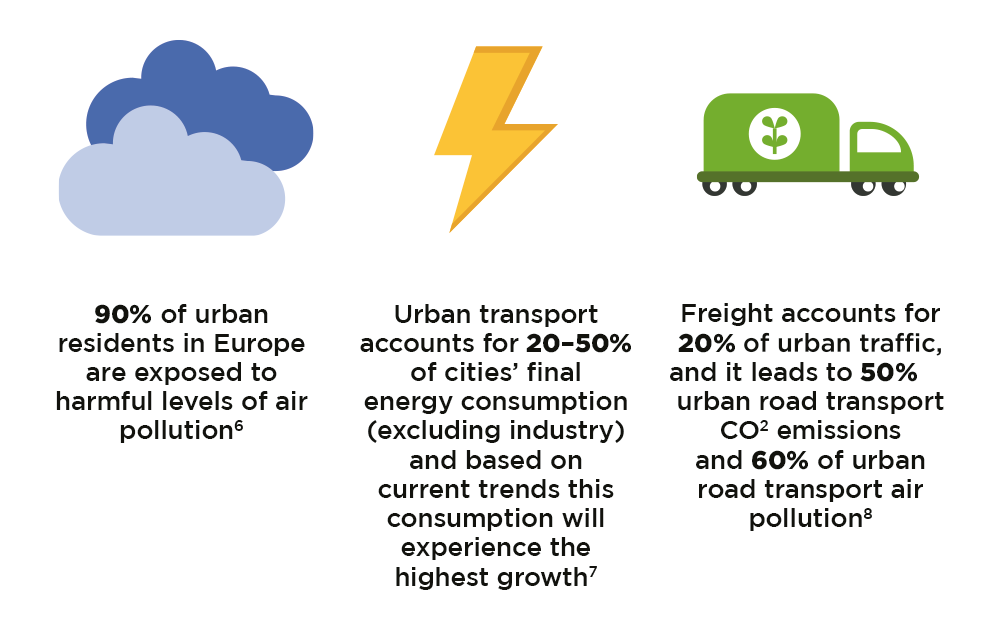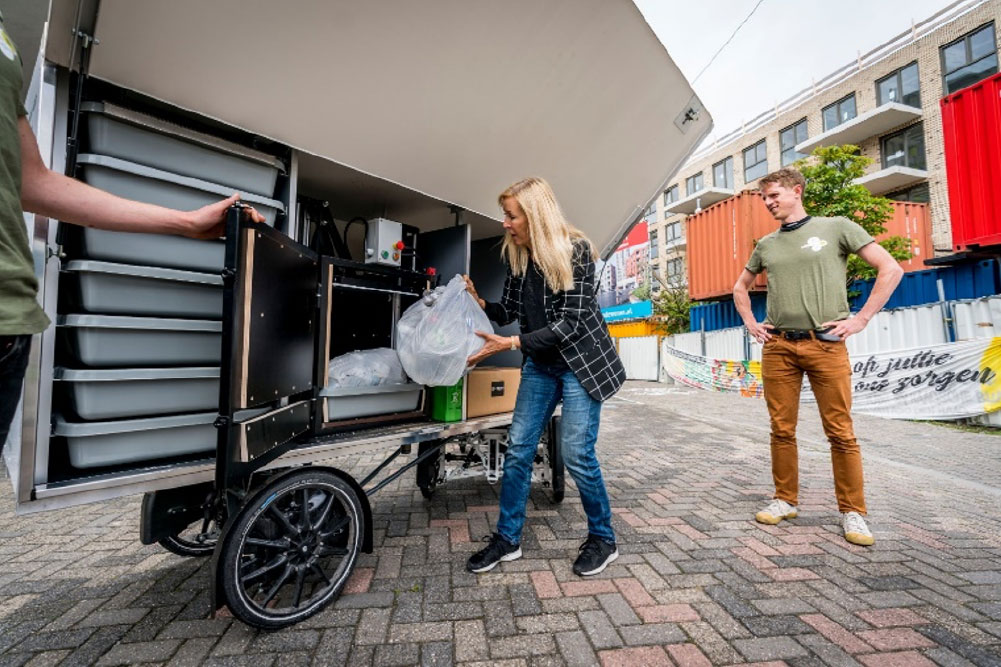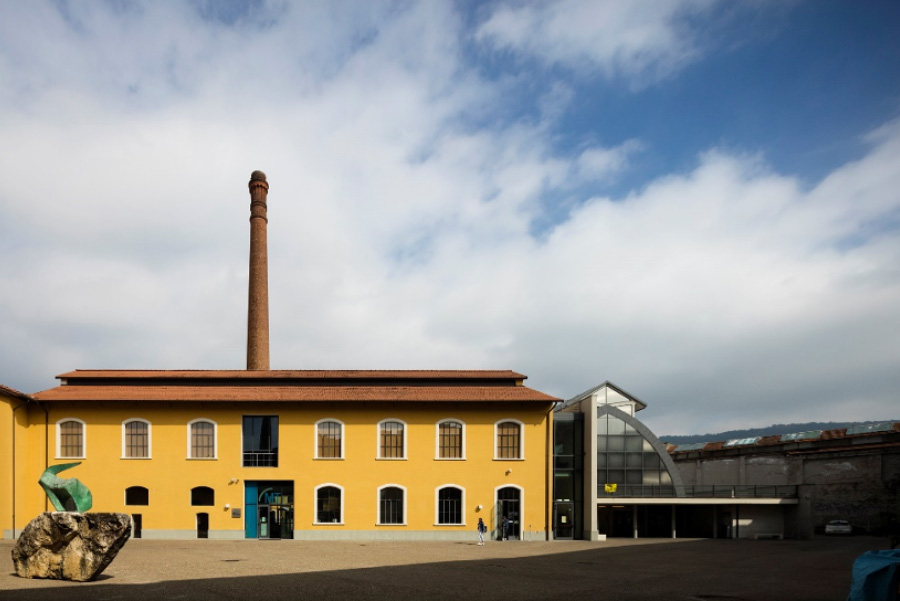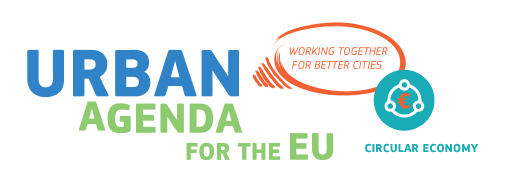Mobility
What are the benefits of a circular mobility system?
A circular mobility system is, to the extent possible, clean, flexible, and shared. Current mobility trends do not favour a high-performing, low-cost system, as they continue to result in increased congestion, environmental depletion, and economic losses.1 The transition towards a circular mobility system will reduce problems like air pollution and congestion in cities.2 An additional benefit of such a transformation is the possibility to convert excessive road infrastructure to serve other citizens needs, e.g. green space or playgrounds.
What will a circular mobility system look like?
According to the Ellen MacArthur Foundation, a circular mobility system is characterised by three main features:2
- An accessible, affordable, and effective mobility system
- A multi-modal mobility structure that incorporates public transportation in combination with on-demand cars as a flexible last-mile solution
- Electric-powered, shared, and automated transportation
Besides these three features, the design of vehicles will also change in a circular mobility system. Elements like the design of vehicles for remanufacturing, durability, efficiency, and easy maintenance will be of increased importance.
How can we transform our mobility system into a circular mobility system?
The circular economy strategies can be applied in the mobility sector in several ways, ranging from circular vehicle designs and production to sharing models that optimise the use of vehicles in an urban context. A few examples of the integration of circular thinking in a mobility system are shown below:
- Circular design models: from vehicles to infrastructure, the design of mobile assets is key to realise the benefits of a circular economy transition.3 Such circular design aims at designing waste and pollution out of the system and extending the life, use, and value of mobility systems. Infrastructure needs to be designed for zero-emission transport vehicles, while vehicles need to be designed for maximum use potential. This can happen through modular product design and the ability to remanufacture the materials used, and through facilitating shared use.
- Use and life extension models: leasing and sharing services can be used to optimise the use of vehicles in a circular mobility system. On average, in Europe, cars are parked 92% of the time and when in use only 1.5 out of 5 seats are occupied.1 Services that enable people to share their privately owned car, or enable people to use a shared car, can optimise car usage and decrease the number of cars on the road or parked on the street. This creates new space for other activities. Freight transport in urban centres can be reduced by integrated freight strategies (as developed in Stockholm
 ), sustainable last-mile delivery services (as implemented in Amsterdam
), sustainable last-mile delivery services (as implemented in Amsterdam  ), or waste collection in shared white trucks (as experimented in Haarlem
), or waste collection in shared white trucks (as experimented in Haarlem  ).
). - Value recovery models: from the design of vehicles in a circular mobility system, engineers have to take into account the possibilities for reuse, recycling or recovery of components and materials in the after-use phase. Using renewable bio-based materials in vehicle constructions, such as sisal or hemp in car interiors, can replace the use of polymers or other conventional materials, which contributes to circularity.4
- Circular support models: as can be seen in figure 13, urban transport accounts for almost half of cities’ energy consumption (excluding industry), and 90% of urban residents are exposed to harmful levels of air pollution. New Information and Communication Technologies (ICT) enable citizens to use shared cars or share their own vehicles, and ICT-platforms will make it easier for goods transport carriers to bundle their goods to maximise vehicle utilisation and minimise freight kilometres.3 Such circular support models will lower the number of cars and trucks on the road and the total vehicle kilometres, resulting in less congestion and decreased levels of air pollution in cities. An interesting initiative, in this respect, is Transport for London’s
 “Open data users” initiative that releases all public TfL data for developers to use in their own software and services.
“Open data users” initiative that releases all public TfL data for developers to use in their own software and services.

Figure 1: Negative effects of urban transport.
(Ellen Macarthur Foundation, 2019)

References
-
1. Ellen MacArthur Foundation. (2015). Growth within: A circular economy vision for a competitive Europe.
https://www.ellenmacarthurfoundation.org/assets/downloads/publications/EllenMacArthurFoundation_Growth-Within_July15.pdf -
2. Ellen MacArthur Foundation. (2017). Cities in the circular economy: An initial exploration.
https://www.ellenmacarthurfoundation.org/assets/downloads/publications/Cities-in-the-CE_An-Initial-Exploration.pdf
-
3. Ellen MacArthur Foundation. (2019). Urban mobility system.
https://www.ellenmacarthurfoundation.org/assets/downloads/Mobility_All_Mar19.pdf -
4. Center for Automotive Research. (2012). The bio-based materials automotive value chain.
https://www.cargroup.org/wp-content/uploads/2017/02/The-Bio_Based-Materials-Automotive-Value-Chain.pdf






